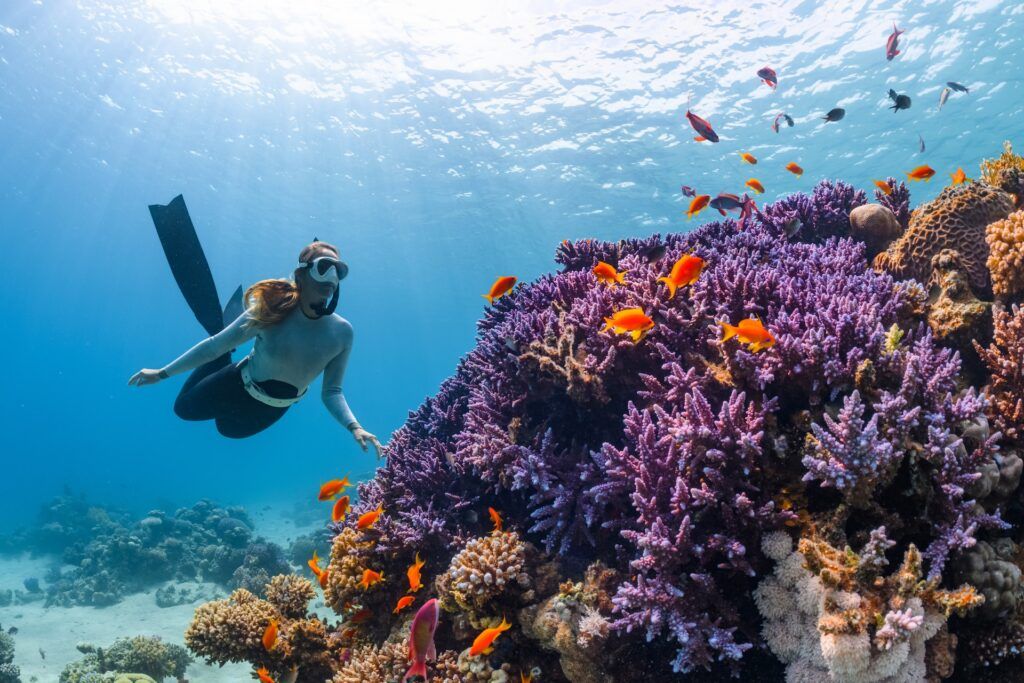What Are The Different Types Of SCUBA Diving?
Lauren Collison June 27th, 2023 Posted In: Articles Tags: SCUBA
Different Types of SCUBA Diving
SCUBA diving can be an exhilarating underwater adventure. It allows you to explore the mesmerizing beauty of the ocean depths and build an appreciation for the life underwater. However, the world of SCUBA diving encompasses a wide range of specialized techniques and environments. We’ll be diving (pun intended) into the various types of SCUBA diving in this article along with pointing out their unique characteristics, gear requirements, and the unforgettable experiences they offer. And while there are a ton of different types of SCUBA diving to point out, we’ll be touching on some of the most popular types of diving.
Recreational SCUBA Diving
Recreational diving is the most common type of SCUBA diving, practiced by enthusiasts of all levels. It encompasses a range of experiences, including diving in coral reefs, exploring marine life, and appreciating underwater ecosystems. Diving recreationally (also known as open water diving) means that you are typically diving within safe depth limits (usually as deep as 130 feet) and follow standard diving procedures.
You may also earn certifications such as an open water certification, advanced open water certification, or rescue diver certification. These allow for increased depth and additional training. Recreational dives are the types of SCUBA diving adventures most known or popular for being leisurely and enjoyable types of dives.
What do divers typically wear for recreational dives? Pretty much the basics. This includes:
- A SCUBA mask
- Snorkel (for shallow dives)
- SCUBA fins
- SCUBA diving wetsuit
- SCUBA diving wetsuit accessories like boots, gloves, or hood
- Buoyancy Control Device (BCD)
- Air tank
Advanced Open Water Diving
Advanced Open Water Diving is a program designed for certified SCUBA divers who want to enhance their recreational SCUBA diving skills and explore new diving opportunities. Essentially, advanced open water diving builds upon the knowledge and experience gained from the open water diving certification and provides divers with further training and exposure to different diving environments.

Technical Diving
For more experienced and skilled divers seeking deeper and more challenging environments, technical diving offers a thrilling opportunity. Technical diving involves using specialized equipment and techniques to dive beyond recreational limits. This type of diving takes recreational diving up a notch because technical dives let you explore below 130 feet in the ocean.
The types of technical diving adventures include:
- Cave Diving
- Reef Diving
- Wreck Diving
Technical divers undergo rigorous training to manage the risks associated with extended bottom times and exposure to decompression stops. This type of diving requires advanced knowledge of gas mixtures, decompression procedures, and equipment configurations to ensure safety.
Cave Diving
Cave diving is an exhilarating experience as exploring underwater caves can provide some unforgettable sights. However, cave diving can be kind of a demanding form of diving that requires specialized skills and equipment. Cave divers navigate intricate passageways, often in low visibility conditions, and must be proficient in buoyancy control, line handling, and communication. Due to the inherent risks associated with confined spaces, darkness, and potential entanglement hazards, proper training and experience are crucial for cave diving.
Wreck Diving
Wreck diving attracts divers with a fascination for maritime history and the allure of exploring sunken vessels. Wrecks can range from ships to modern-day submarines and offer a glimpse into the past. Wreck divers must possess advanced diving skills, as penetrating wreck structures can be hazardous without proper training. It is essential to exercise caution and respect for the environment, as wrecks often serve as artificial reefs and provide habitats for marine life.
Reef Diving
Reef diving allows people to explore and experience underwater ecosystems such as coral reefs. Coral reefs are diverse marine habitats formed by the accumulation of coral skeletons over time and are home to a wide range of marine life, including colorful fish, invertebrates, and various plant species.
When engaging in reef diving, divers typically wear SCUBA gear or snorkeling equipment to immerse themselves in the underwater world. You can explore the reef by swimming among the corals, observing the intricate structures and vibrant marine life that inhabit them, but you must be mindful of these fragile ecosystems!
And Many More Types of Dives!
SCUBA diving offers a plethora of experiences, and understanding the different types of diving allows enthusiasts to choose their preferred adventure. Other types of diving to mention also include night diving, freediving, and even ice diving!
Whether it’s exploring coral reefs, delving into mysterious caves, or documenting the wonders of the underwater world through a lens, each type of SCUBA diving promises its own set of challenges, thrills, and opportunities for exploration. So, get out there and [safely] explore the depths of the ocean today- you’ve got all types of dives to try out!

